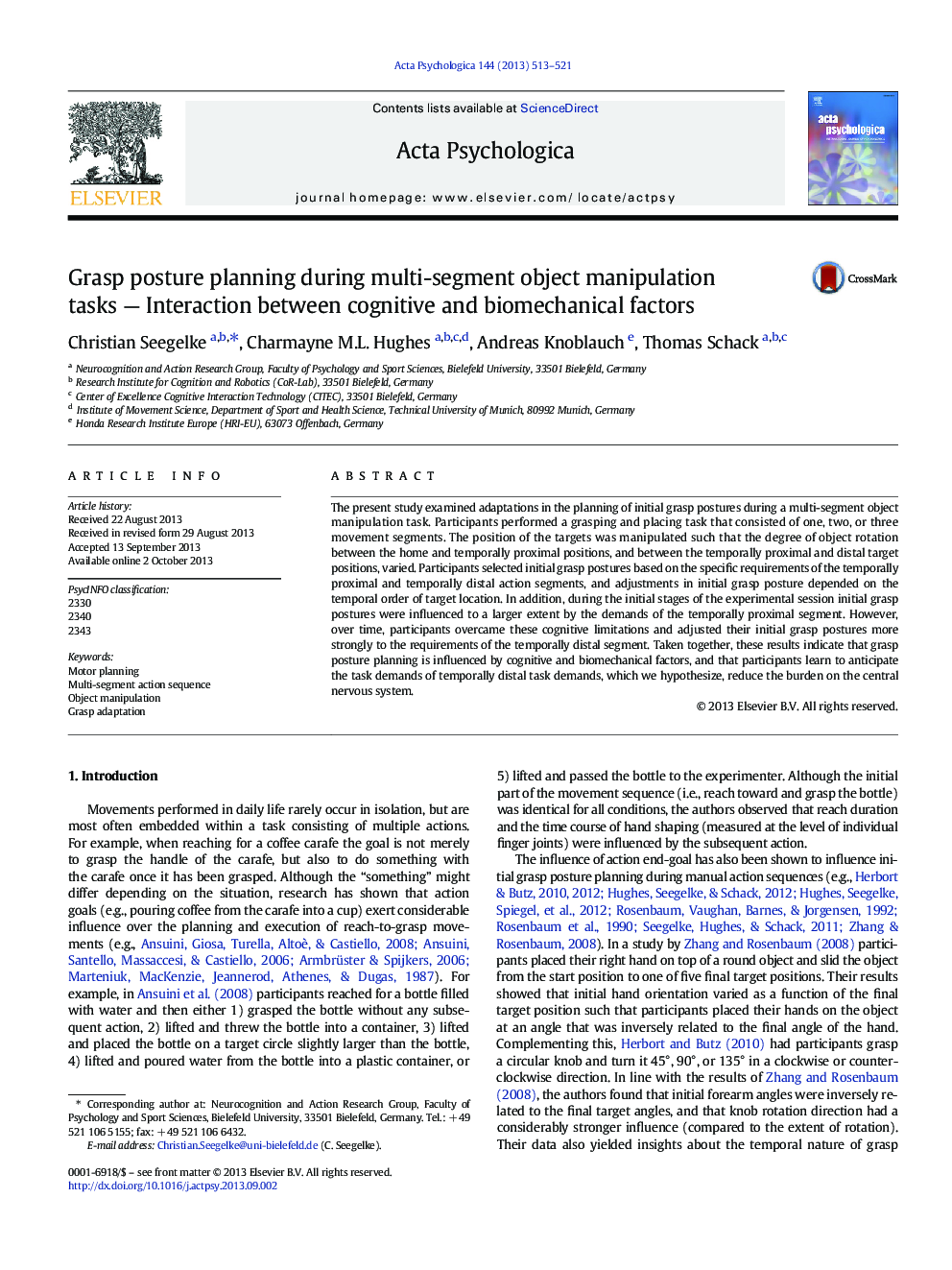| Article ID | Journal | Published Year | Pages | File Type |
|---|---|---|---|---|
| 10453802 | Acta Psychologica | 2013 | 9 Pages |
Abstract
The present study examined adaptations in the planning of initial grasp postures during a multi-segment object manipulation task. Participants performed a grasping and placing task that consisted of one, two, or three movement segments. The position of the targets was manipulated such that the degree of object rotation between the home and temporally proximal positions, and between the temporally proximal and distal target positions, varied. Participants selected initial grasp postures based on the specific requirements of the temporally proximal and temporally distal action segments, and adjustments in initial grasp posture depended on the temporal order of target location. In addition, during the initial stages of the experimental session initial grasp postures were influenced to a larger extent by the demands of the temporally proximal segment. However, over time, participants overcame these cognitive limitations and adjusted their initial grasp postures more strongly to the requirements of the temporally distal segment. Taken together, these results indicate that grasp posture planning is influenced by cognitive and biomechanical factors, and that participants learn to anticipate the task demands of temporally distal task demands, which we hypothesize, reduce the burden on the central nervous system.
Related Topics
Life Sciences
Neuroscience
Cognitive Neuroscience
Authors
Christian Seegelke, Charmayne M.L. Hughes, Andreas Knoblauch, Thomas Schack,
